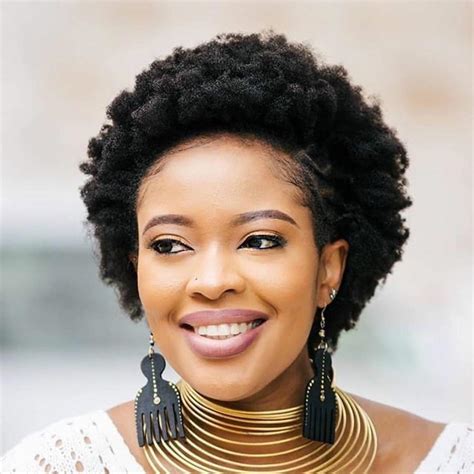Introduction

Natural black African hairstyles are a celebration of the unique beauty and versatility of African hair. From intricate cornrows to voluminous Afros, these styles showcase the rich cultural heritage and creativity of the African diaspora.
Historical Significance
African hairstyles have been central to African cultures for centuries, serving as a means of self-expression, social status, and spiritual significance. Hairstyles varied across different regions and tribes, reflecting cultural traditions and beliefs.
Types of Natural Black African Hairstyles
1. Braids
- Cornrows: Tightly woven rows that create intricate patterns on the scalp.
- Box Braids: Square-shaped braids with extensions added for length and thickness.
- Ghana Braids: Long, flowing braids with a thick, textured appearance.
- Knotless Braids: Braided without creating knots at the roots, providing a more natural-looking style.
2. Afros
- Natural Afro: Untamed, voluminous hair that embraces its natural texture and shape.
- TWA (Teeny Weeny Afro): A short, cropped Afro that frames the face and showcases natural curls.
- High Afro: A voluminous Afro worn high on the head, creating a dramatic and statement-making style.
3. Twists
- Senegalese Twists: Two-strand twists created by intertwining two sections of hair together.
- Havana Twists: Similar to Senegalese twists but made with extensions for added length and fullness.
- Rope Twists: Thick, chunky twists that resemble coils of rope.
4. Buns and Updos
- Pineapple Bun: A high bun gathered at the top of the head, resembling the shape of a pineapple.
- High Puff: A voluminous ponytail worn high on the head, creating a chic and playful look.
- African Crown: An elaborate updo made of intertwined braids and twists, forming a crown-like shape.
Benefits of Natural Black African Hairstyles
- Protection: Braids, twists, and Afros provide natural protection for delicate hair strands, reducing breakage and split ends.
- Versatility: These hairstyles offer endless styling possibilities, from sleek and elegant to bold and voluminous.
- Cultural Expression: Natural black African hairstyles embody the rich heritage and traditions of African cultures.
Choosing the Right Hairstyle
Choosing the right natural black African hairstyle depends on several factors, including:
- Face shape
- Hair texture and density
- Desired length and volume
- Personal style and preferences
Table 1: Hairstyle Recommendations by Face Shape
| Face Shape | Recommended Hairstyles |
|---|---|
| Oval | Most hairstyles are flattering |
| Square | Soft, round styles like Afros and round cornrows |
| Diamond | Hairstyles that widen the forehead, such as high buns and updos |
| Heart | Styles that frame the cheekbones, such as side-swept braids and bobs |
Table 2: Hairstyle Recommendations by Hair Texture
| Hair Texture | Recommended Hairstyles |
|---|---|
| Fine | Cornrows, box braids, twists |
| Medium | Afros, TWA, high buns |
| Coarse | Natural Afros, braids with extensions, rope twists |
Table 3: Pros and Cons of Common Hairstyles
| Hairstyle | Pros | Cons |
|---|---|---|
| Cornrows | Protective, versatile, stylish | Can be tight and uncomfortable |
| Box Braids | Extends hair length, adds volume, lasts long | Time-consuming to install |
| Afros | Natural, voluminous, protective | Can be difficult to manage |
| Senegalese Twists | Protective, comfortable, adds length | Can be time-consuming to install |
Table 4: Customer Feedback on Hairstyles
| Customer | Hairstyle | Feedback |
|---|---|---|
| Amina | Box Braids | “[They] look amazing and I love how long they last.” |
| Kwame | Afro | “[It] makes me feel confident and proud of my heritage.” |
| Nneoma | Knotless Braids | “[They’re] so comfortable and protect my hair without causing tension.” |
Conclusion
Natural black African hairstyles are a celebration of beauty, culture, and versatility. From intricate cornrows to voluminous Afros, these styles provide endless opportunities for self-expression and empowerment. By understanding the different types of hairstyles, their benefits, and how to choose the right one, individuals can confidently embrace the beauty of their natural hair.
